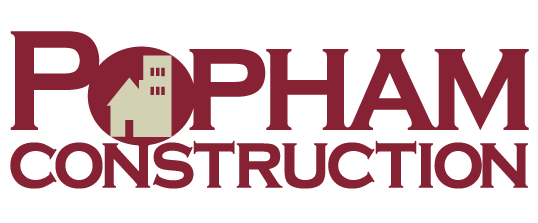Structure – The Popham Team can help determine whether your home, or house plan, can accommodate a second-floor laundry. Popham can help with space-planning issues, including those in an existing home.
Framing – Floor joists must be sturdy enough to support the extra weight and vibrations of a washer and dryer. Older framing might need to be strengthened. A clear path must also be established through which to run plumbing, venting, electrical, and possibly gas lines.
Noise – Walls and ceilings made from two layers of 1/2″ or 5/8″ gypsum wallboard are better than a single layer at dampening vibrations generated by a washer or dryer. Wall and joist spaces should be filled with fiberglass batts, rigid foam, or spray-in insulation to prevent sound from traveling to adjoining rooms, including those above and below.
Waterproofing – The best way to prevent a leak from flooding the rest of the house is to have safeguards in place such as a washing machine drip pan and an electronic shutoff valve that automatically stop the flow of water when it senses a leak.
Utilities – Running a new service lines with minimal demolition and disruption is usually the most challenging and time-consuming part of having a laundry room on an upper floor. It’s an important step because building codes require that the work be done by licensed professionals such as Popham.
Water – Besides running new supply lines, a licensed plumber will need to add an adequately sized drain line to whisk washing-machine waste water away; otherwise, the force created by the washer’s discharge pump might overwhelm existing drain lines and overflow toilets, tubs, and showers downstream with water or soap suds. Also important, and often required by code, is a plumbing vent, which allows air to escape from the system.
Electricity & Gas – Our licensed electrician will need to pull dedicated lines for both the washer and dryer, including a 240-volt line if your dryer is electric. Gas-fueled dryers require only standard 120-volt electrical service. Many building codes require a plumber to install the gas piping between the municipal natural-gas supply or an on-site propane storage tank and your dryer.
Venting – Venting can be run straight up through the attic and roof or out through the foundation.
Washers & Dryers – To minimize vibrations, make sure that your appliances are level. If purchasing new appliances, consider noise levels and cycle lengths if they might be issues. Stackable units are useful when retrofitting a small space such as a closet.

